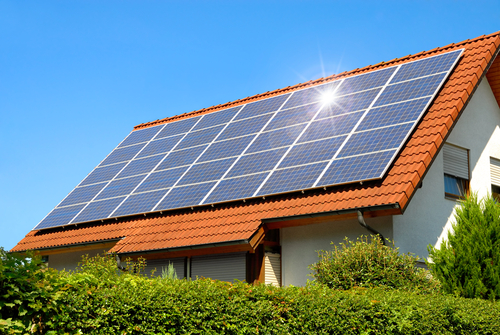This guide breaks down solar roof benefits, drawbacks, and installation, helping you make an informed decision.
The Solar Roofing Boom: Why Americans Are Switching
The U.S. solar industry hit a record $32.5 billion in installations in 2023, with solar roofs leading the charge. Factors fueling this trend include:
• **Tax Credits & Incentives**: The federal Investment Tax Credit (ITC) offers 30% of system costs (for systems installed by 2032 per the Inflation Reduction Act). States like California and New York add their rebates.
• **Rising Energy Costs**: Average U.S. electricity prices rose 14% in 2023, making solar a cost-saving solution.
• **Eco-Conscious Demand**: 67% of Americans prioritize sustainability when purchasing homes or upgrading property (Nielsen Survey).
• **Durability & Aesthetics**: Modern solar tiles blend seamlessly with traditional roofing, doubling as hailproof shields (rated for 1″ diameter hailstones at 50 mph).
Pros of Solar Roofing
1. Lower Energy Bills• Homes in sunny states like Arizona see average savings of $1,500–$2,500/year.• Net metering policies let you sell excess energy back to the grid, further reducing costs.
2. Increased Property Value• Studies show solar homes sell for 4.1% more on average (Zillow). Buyers pay a premium for reduced energy costs and sustainability.
3. Environmental Impact• A 6 kW solar roof offsets 8,000 lbs of CO₂ annually—equivalent to planting 100 trees/year.
4. Low Maintenance• No need for roof repairs (tiles are waterproof and self-cleaning). Most systems last 25–30 years.
5. Resilience to Weather• Solar roofs withstand hurricanes, wildfires, and extreme heat better than traditional asphalt shingles.
Cons to Consider
-
High Upfront Costs• Average installation price: $25,000–$40,000 (before incentives). While the ITC covers 30%, many homeowners need loans or leases.
-
Weather Dependency• Solar panels generate less energy in cloudy regions (e.g., Pacific Northwest) or during winter months.
-
Roof Compatibility Issues• Older roofs (pre-2010) may need replacement before installation, adding $5,000–$15,000.
-
Insurance Hurdles• Some insurers charge higher premiums for solar systems. Confirm coverage with your provider beforehand.
-
Long Payback Period• Despite savings, expect 6–10 years to recoup costs (varies by location and energy usage).
7-Step Installation Guide
-
Assess Your Home’s Suitability• **Sun Exposure**: Aim for 6+ hours of direct sunlight/day. Use tools like the Solar Panel Calculator (EnergySage) to estimate potential savings.• **Roof Condition**: Hire a certified inspector to check for age, damage, or sagging. Asphalt roofs typically last 15–30 years; wood shingles 10–25.• **Local Permits**: Research zoning laws in your area (e.g., HOA restrictions in Texas or California).
-
Compare Quotes from Reputable Providers• Use platforms like EnergySage or SunPower to get bids from 3–5 installers. Check reviews (BBB accreditation is a must!) and ask about: ◦ Warranties (25-year performance warranties are standard). ◦ Financing options (buyout vs. leases). ◦ Maintenance packages.
-
Choose Your Solar Technology• **Solar Shingles**: Best for aesthetics (e.g., Tesla’s Powerwall+).• **Traditional Panels**: More cost-effective for larger roofs.• **Hybrid Systems**: Combine solar tiles with traditional panels for optimal energy capture.
-
Permitting & Utility Coordination• This step can take 1–6 weeks. Your installer should handle submissions to local governments and your utility company.
-
Installation Timeline• Most jobs take 3–5 days. Work proceeds during daylight hours to maximize efficiency.
-
System Activation & Monitoring• A technician will connect your system to the grid and install a monitoring app to track energy production in real time.
-
Maintain Your System• Clean panels 2–4 times/year (hose down gently; avoid abrasive tools).• Schedule annual inspections to ensure no shading issues or debris buildup.
Top Questions to Ask Your Installer
• How does your company handle roof repairs post-installation?
• What happens if my energy needs change (e.g., adding EVs)?
• Can you provide case studies of similar homes in my neighbourhood?
• Are you certified by the **North American Board of Certified Energy Practitioners (NABCEP)**?
Is Solar Roofing Worth It?
Solar roofing is a smart investment for homeowners in sunny states with high electricity costs, but it requires careful planning. By weighing the pros and cons and partnering with a reputable installer, you can slash your carbon footprint while building equity in your home.



